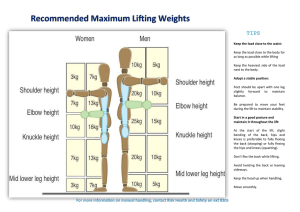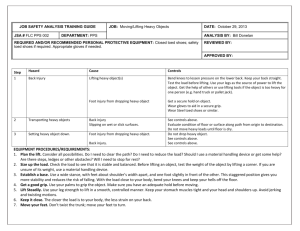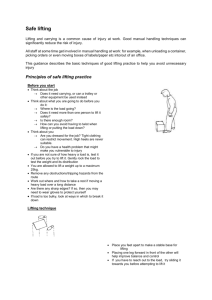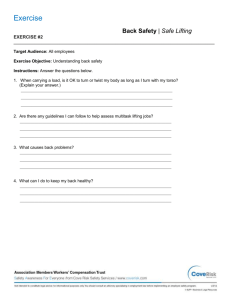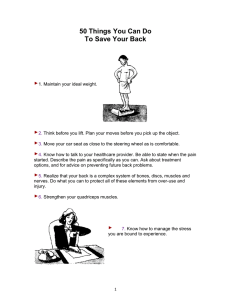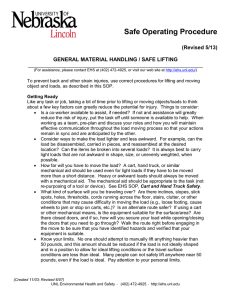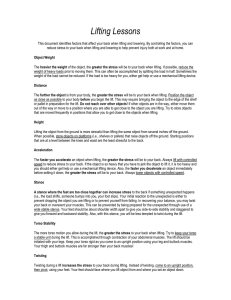Safe Lifting Procedures: A Guide to Injury Prevention
advertisement
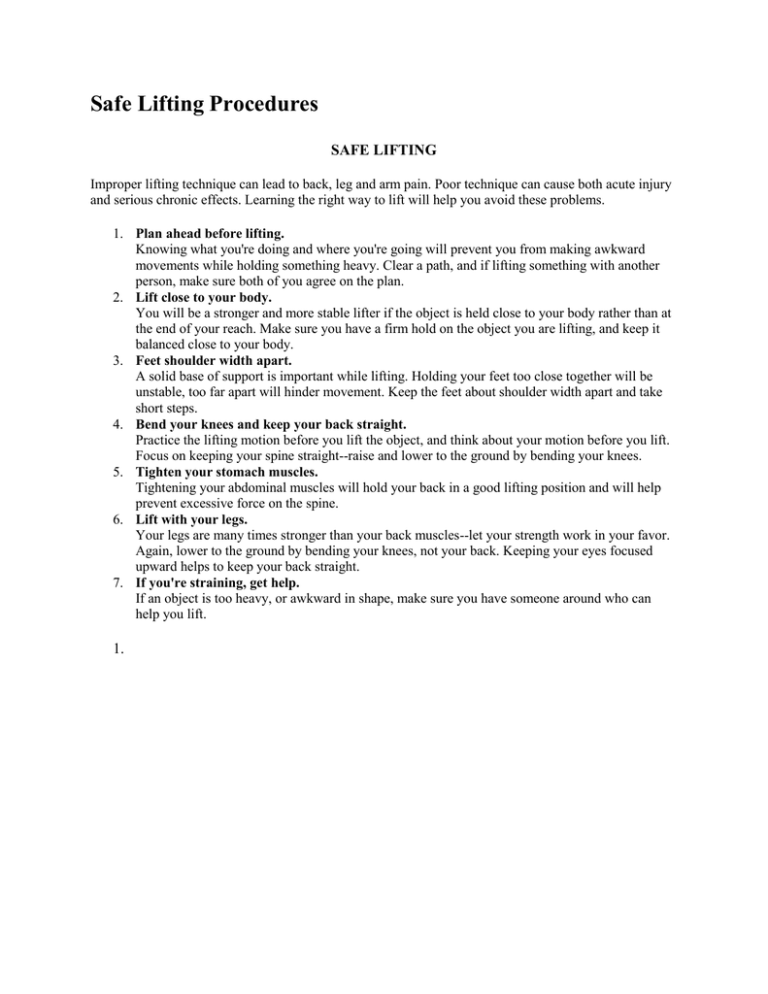
Safe Lifting Procedures SAFE LIFTING Improper lifting technique can lead to back, leg and arm pain. Poor technique can cause both acute injury and serious chronic effects. Learning the right way to lift will help you avoid these problems. 1. Plan ahead before lifting. Knowing what you're doing and where you're going will prevent you from making awkward movements while holding something heavy. Clear a path, and if lifting something with another person, make sure both of you agree on the plan. 2. Lift close to your body. You will be a stronger and more stable lifter if the object is held close to your body rather than at the end of your reach. Make sure you have a firm hold on the object you are lifting, and keep it balanced close to your body. 3. Feet shoulder width apart. A solid base of support is important while lifting. Holding your feet too close together will be unstable, too far apart will hinder movement. Keep the feet about shoulder width apart and take short steps. 4. Bend your knees and keep your back straight. Practice the lifting motion before you lift the object, and think about your motion before you lift. Focus on keeping your spine straight--raise and lower to the ground by bending your knees. 5. Tighten your stomach muscles. Tightening your abdominal muscles will hold your back in a good lifting position and will help prevent excessive force on the spine. 6. Lift with your legs. Your legs are many times stronger than your back muscles--let your strength work in your favor. Again, lower to the ground by bending your knees, not your back. Keeping your eyes focused upward helps to keep your back straight. 7. If you're straining, get help. If an object is too heavy, or awkward in shape, make sure you have someone around who can help you lift. 1.
